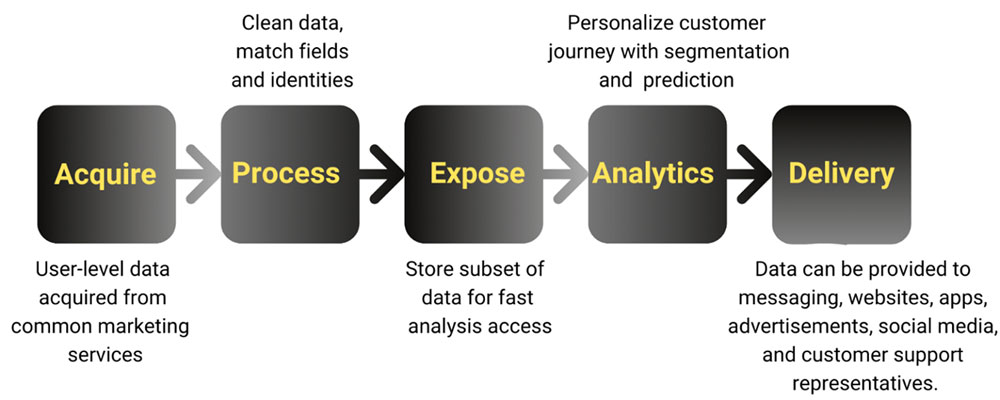All our efforts ultimately focus on giving our clients value. We can deliver that value and differentiate ourselves from our rivals more effectively the more we understand our clients. While this goal may seem straightforward, there are a lot of obstacles to overcome. Data influences all aspects of the customer experience. A 360-degree perspective of the consumer is provided through customer data platforms, which combine data from numerous sources. These platforms reduce the need for marketers to access different systems to build customer profiles, run marketing campaigns, and forecast customer behavior. They are made to be managed and utilized by marketers.
Customer Data Platform
A customer data platform (CDP) is a piece of software that streamlines the marketing process using extensive research and unique data. A customer database, marketing automation, multichannel campaign management, and real-time interaction management are typically included in a CDP. A CDP gathers data properly obtained through customer interactions to assist businesses in smooth services and gain a deep insight into customers’ purchasing habits.
Most customer journeys include more than three distinct data sources, such as email, the web, and mobile apps. These data streams are not, however, connected in real-time by most businesses. Consumers feel a disconnected process as a result, and marketers are left without a reliable source of information about their target market. While switching between channels, customers anticipate having consistent, in-the-moment experiences. For businesses, CDP technology bridges this gap.
Data process in CDP

Features of CDP
Working of CDP
CDP originally integrates all of the company’s customer data in one place. The next step for CDP is to reconcile known client identities, such as email addresses and cell phone numbers, with what we already know about those customers. After the CDP has generated unified consumer profiles, the system must make this information instantaneously accessible so that companies may offer customized experiences. The main duties of CDPs are data collection, data unification, data activation, and data insights. The ability of a CDP to segment consumers is its greatest benefit for marketers. With the use of a CDP, marketers may see how a single client interacts with the various brands of their business and spot chances for further cross-selling and customization.
If the company wants to increase the effectiveness and agility of its marketing activities while also enhancing the overall customer experience, a customer data platform may be the best option. A CDP may combine customer data from all channels and different silos to produce a single customer view that can act as the company’s single, verifiable profile. With the use of this unified perspective, your marketers will be able to analyse consumer data and pinpoint key target groups for easier delivery of more contextual and consistent content.



